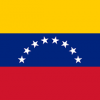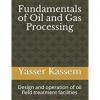We have one operation were abou 1-2 % of water(max water) need to be removed from Reaction mass, for which presently we follow batch distillation. As far as qty's are concern batch distillation seems to take more time. hence i im searching for various options fro removal of residual water.
also i wanted to know waht are the varoius adsorbents that can be used for removal of this..or any other method that may help..
Thanks in advance
|
|
Dehydration Techniques
Started by asm8930, May 24 2010 03:31 AM
4 replies to this topic
Share this topic:
#1

Posted 24 May 2010 - 03:31 AM
#2

Posted 24 May 2010 - 06:44 AM
asm:
In spite of the gross misspellings and horrible text messaging, it is still difficult to make sense or logic out of your post. Please use normal, conventional, and correct English when communicating engineering information important to your query. Why persist in making it harder for us, your readers and potential helpers, to understand just exactly what it is that you are trying to state? This is totally un-engineering type of communications.
For example, WHAT – exactly – is the identity of your reaction mass? Is it all liquids? Is it all gases or vapors? Is it a mixed phase? If it is a mixed phase product, which of the phases are you interested in dehydrating?
More importantly, why don’t you just tell us the exact composition of the reaction mass – complete with its total mass flow rate, temperature, and pressure? Let’s stick to specifics and get to the core of the problem – if there is a problem here.
It would also be helpful if you could tell us what level of education you are presently in. This will help in orienting our recommendations and suggestions to your query. At present, if I have to guess from your spelling ability, I would say that it is primary school.
Await your response.
#3

Posted 27 May 2010 - 12:38 AM
Dear Art,
I totaly agree ..for my mistake...and i will definetly try to improve on that.
We have liquid phase reaction mass Total qty -3000 kg/hr(component A(97-98%) + water (2-3%) weight basis)with Viscosity ~15 Cp for security reason i cannot disclose the name of the component A.
Presently we remove excess water(2-3%) with batch distillation process ie heating it to 70 deg C @25 mbara in akettle which takes almost 5-6 hrs.
So,i wanted to explore various methods which can be employed to remove this water.So that i can have some benefit on batch cycle time.
I hope u will help me in this regards....
Thanks
I totaly agree ..for my mistake...and i will definetly try to improve on that.
We have liquid phase reaction mass Total qty -3000 kg/hr(component A(97-98%) + water (2-3%) weight basis)with Viscosity ~15 Cp for security reason i cannot disclose the name of the component A.
Presently we remove excess water(2-3%) with batch distillation process ie heating it to 70 deg C @25 mbara in akettle which takes almost 5-6 hrs.
So,i wanted to explore various methods which can be employed to remove this water.So that i can have some benefit on batch cycle time.
I hope u will help me in this regards....
Thanks
#4

Posted 27 May 2010 - 04:11 AM
Without identifying the major component only general information that can easily be acquired from several texts can be given.
For example if I were to suggest a membrane based solution I would need to know interaction of component A (+any other impurities) on the membrane. In general membranes are limited to azeotropic steams or streams that have a very low k value/tight Vapour Liquid Equilibrium curves.
For example if I were to suggest a membrane based solution I would need to know interaction of component A (+any other impurities) on the membrane. In general membranes are limited to azeotropic steams or streams that have a very low k value/tight Vapour Liquid Equilibrium curves.
#5

Posted 27 May 2010 - 05:05 AM
ASM:
My response is along the same line as Riven. I can only recommend you look at general solutions that may (or may not) apply:
- Preheat the solution and flash it into an evaporator under vacuum. This presumes that component A is not sensitive to the heat required and that its boiling point is much higher that that of the water. Heat exchange between inlet and outlet streams will contribute some economy of operation, but entail additional capital cost.
- Submit the solution to a pair of fixed adsorbent beds; one bed would be in regeneration while one would be drying. The beds are switched in sequencing operations. Again, this has to involve a variety of assumptions - such as the affinity of component A to the adsorbent and the selectivity of the adsorption which determines the size of bed and regenration requirements.
Similar Topics
Teg DehydrationStarted by Guest_Root_* , 22 Aug 2022 |
|

|
||
Teg Dehydration Unit Change OperationStarted by Guest_AriefRahmanHakim_* , 13 Dec 2021 |
|

|
||
Water In Gases, Hydrates, Dehydration, And Sweetening CalculationStarted by Guest_Yasserkassem_* , 12 Mar 2021 |
|

|
||
Teg Dehydration UnitStarted by Guest_AriefRahmanHakim_* , 08 Sep 2020 |
|

|
||
Dehydration UnitStarted by Guest_thivya_* , 07 Aug 2020 |
|

|

 FB
FB







